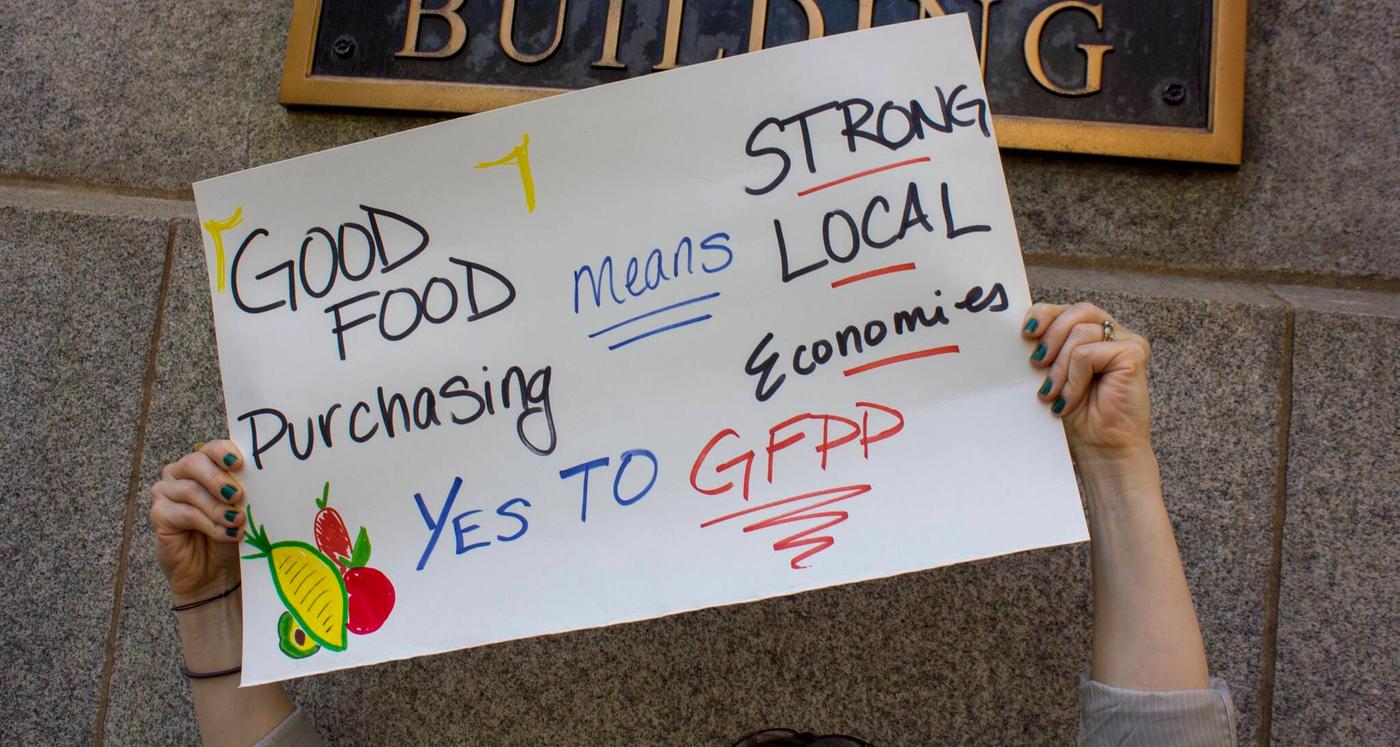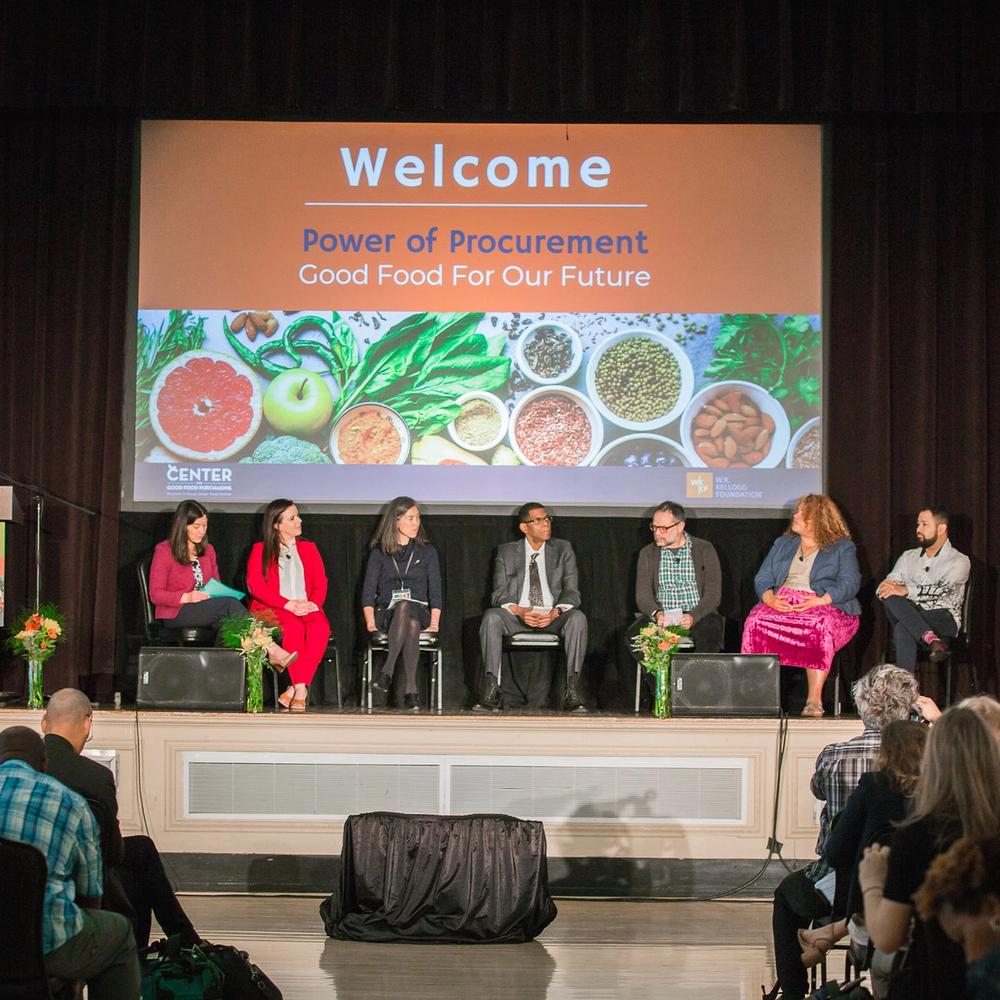
Participation in the Good Food Purchasing Program by all public institutions in Chicago and Cook County could*:
Reduce chronic disease risk by 1.44% equivalent to $750,000 in annual healthcare savings
Cook County has prioritized healthy food access as a key strategy for preventing chronic disease and improving community health.
Create 124 local jobs equivalent to $6.15 million in annual local wages
The Good Food Purchasing Initiative of Metro Chicago is working to develop an equitable and resilient supply chain to meet increasing demand for locally-produced food.
Promote transparency in food purchasing
Chicago is working to build trust and awareness by including transparency agreements in food purchasing contracts.
*Impacts are calculated based on estimated annual regional food spend. These are the estimated impacts of increasing 30% of current spending on local products, without changing total food spend, and increasing 30% of current purchases of fruits and vegetables, without changing total food spend. For additional detail, download the methodology.

"Shifting how our community-based institutions purchase food is part of a broader strategy to shift institutional policies, practices, resources, and opportunities towards an anti-racist and sustainable society that upholds food justice and sovereignty. Building demand for food that honors land, labor, animals, and community has the potential to create ripple effects not just in our food supply chains, but our broader economic, social, and environmental ecosystem."
 Marlie Wilson - Good Food Purchasing Project Manager, Chicago Food Policy Action Council
Marlie Wilson - Good Food Purchasing Project Manager, Chicago Food Policy Action CouncilSee how other cities are making a difference.